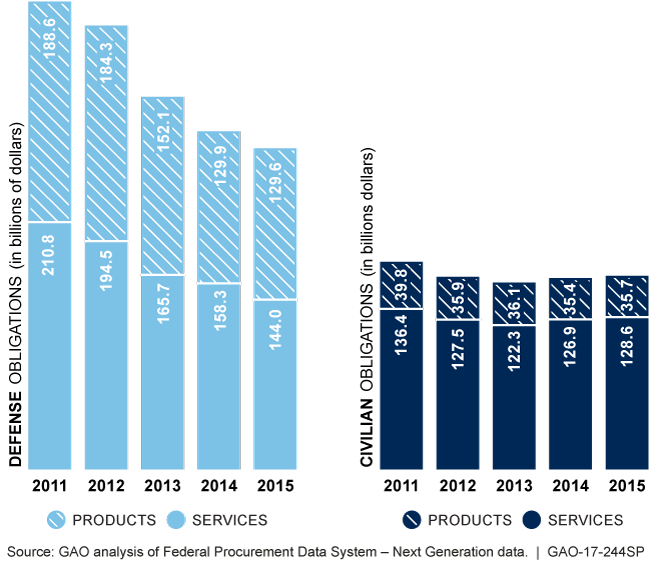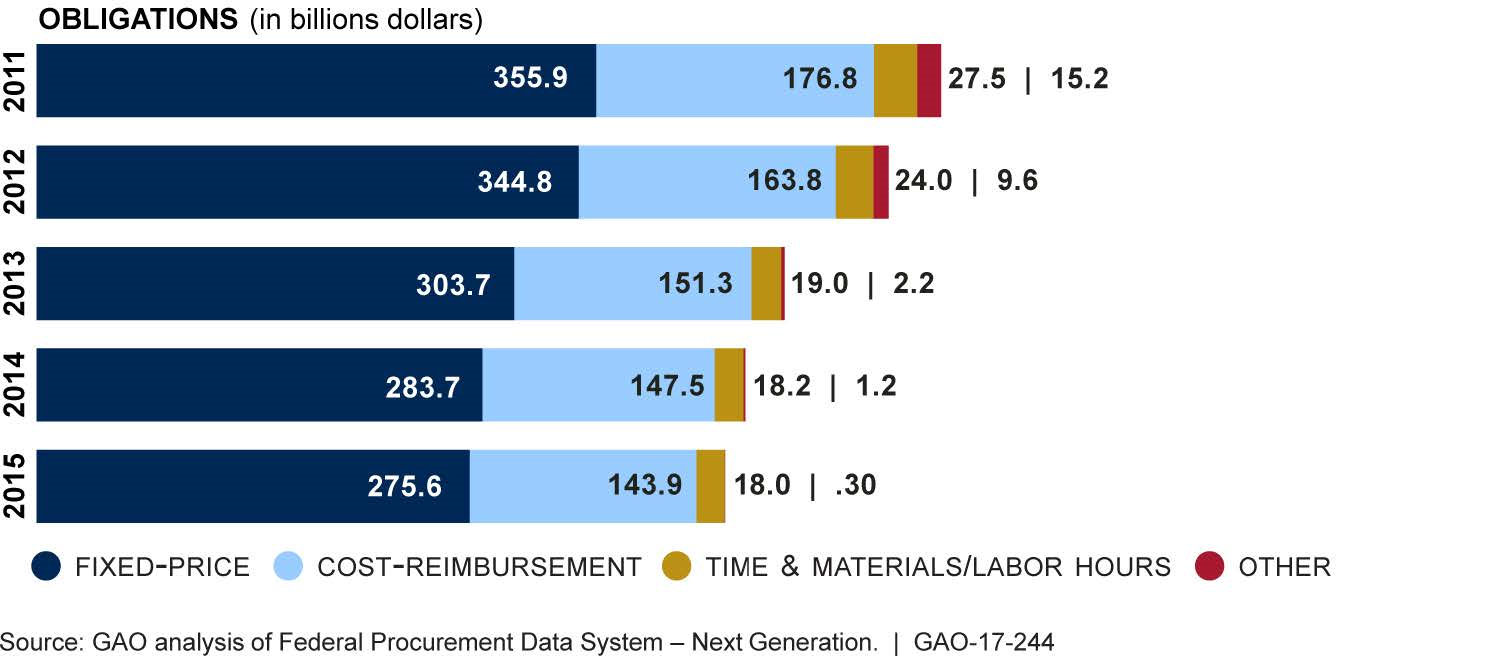Contracting Data Analysis: Assessment of Government-wide Trends
Fast Facts
Federal agencies spent over $430 billion on contracts for goods and services in 2015—almost 40 percent of all discretionary spending. To strengthen contracting practices and increase oversight of government spending, we analyzed contract data and identified overall trends in spending, competition, and contract type.
From 2011 to 2015, we found that spending at defense agencies decreased by almost 32 percent, while spending at civilian agencies remained fairly steady. We also found that contracts awarded through competition stayed steady at about 64 percent, and the use of fixed price contracts stayed steady at over 63 percent.
Defense and Civilian Agency Obligations on Contracts, Fiscal Years 2011-2015

Note: An earlier version of this summary featured an unrelated figure and has been corrected.
Bar charts showing that defense and civilian contract obligations decreased from 2011 to 2015.
Highlights
What GAO Found
GAO's analysis of government-wide contracting data found that while defense obligations to buy products and services decreased by almost 31 percent from fiscal year 2011 through 2015, from $399 billion to $274 billion, civilian obligations remained fairly steady over this time.

Government-wide competition rates—the percentage of total obligations reported for competitive contracts—remained steady at just below two-thirds over fiscal years 2011 through 2015.

From fiscal year 2011 through 2015, federal agencies used fixed price contracts for an average of 63 percent of obligations, mitigating risk to the government.

Why GAO Did This Study
Federal agencies obligated over $430 billion through contracts for products and services in fiscal year 2015, accounting for almost 40 percent of the government's discretionary spending. Because spending on contracts consumes a large portion of the federal government's discretionary budget, Congress and the administration have taken steps to strengthen federal contracting practices and enhance oversight of government contract spending.
This report identifies overall trends in defense and civilian agencies' contract obligations from fiscal years 2011 through 2015 (the most recent and complete available at the time of GAO's review), such as trends in competition and use of various contract types. This report includes snapshots of procurement activity at the 10 civilian agencies with the highest levels of obligations in fiscal year 2015 as well as the 3 military departments. All data are presented in constant fiscal year 2015 dollars. GAO analyzed data from the Federal Procurement Data System-Next Generation (FPDS-NG), the government's procurement database, and reviewed prior GAO and Inspector General reports.
Recommendations
GAO is not making any new recommendations in this report. In recent years GAO has issued numerous reports with recommendations to defense and civilian agencies to address issues related to competition, contract type, and contracted services. Agencies generally concurred with these recommendations and have taken or planned actions to address them.
